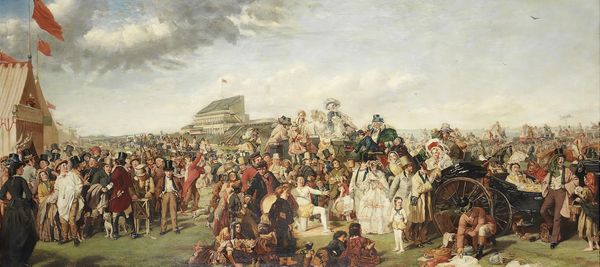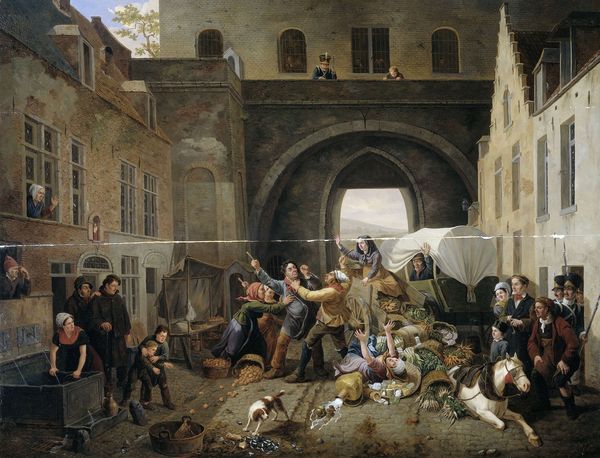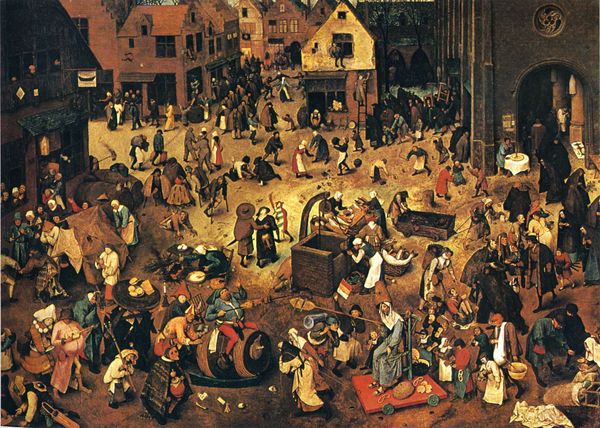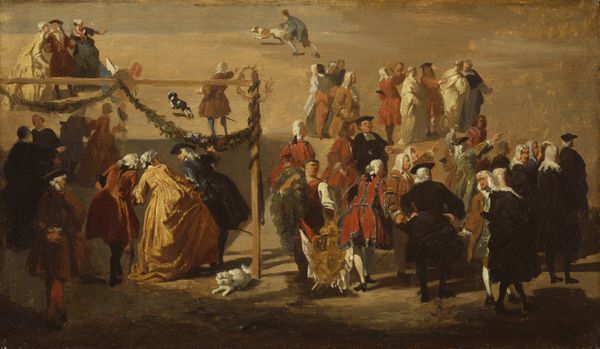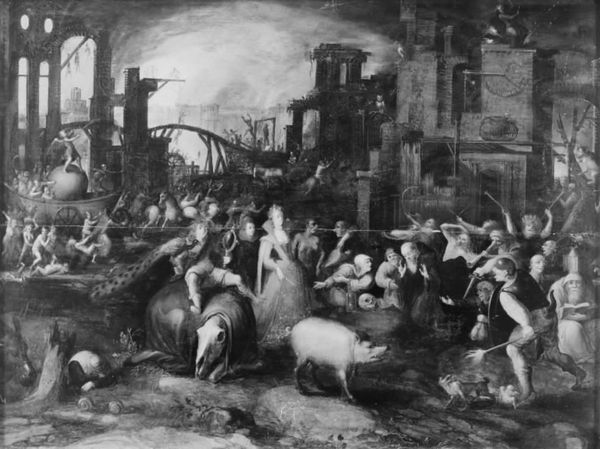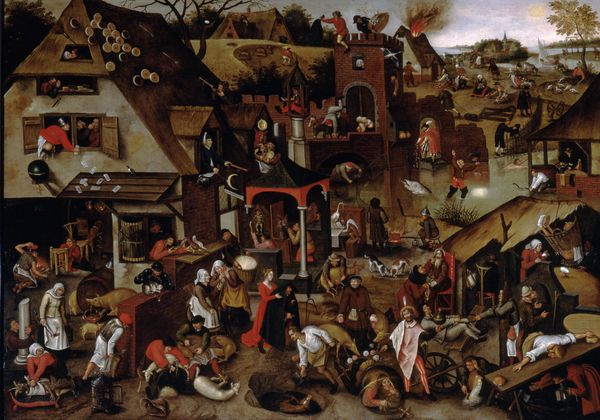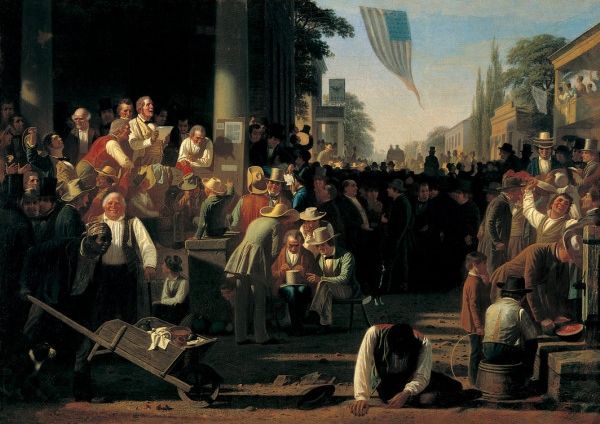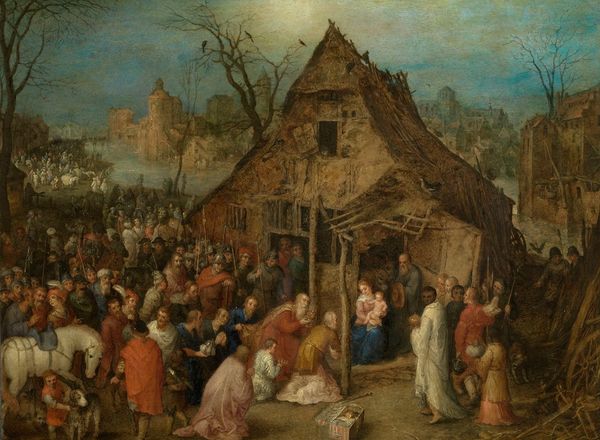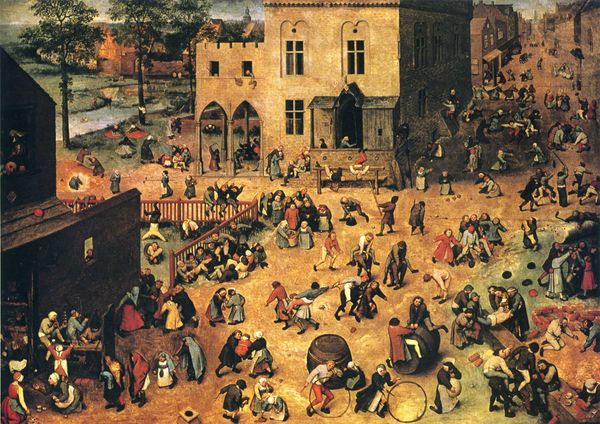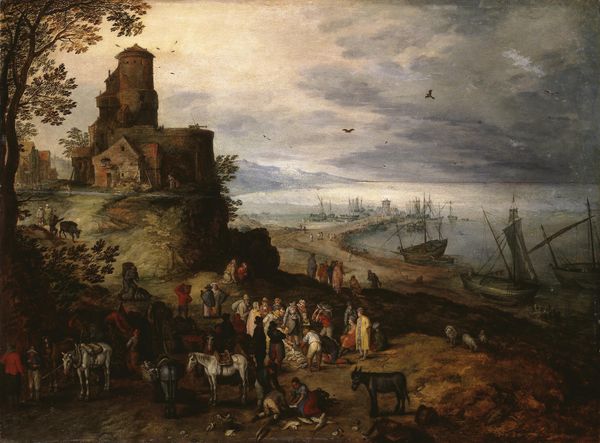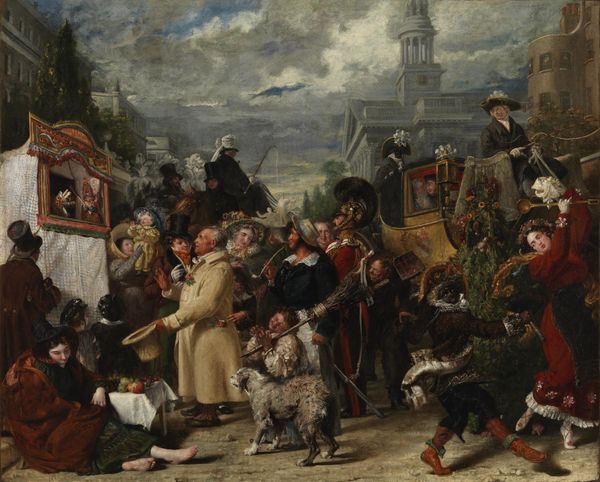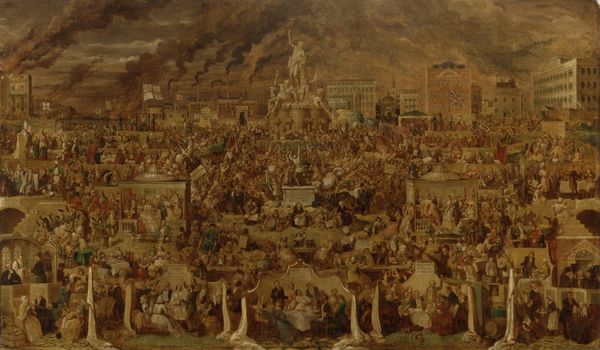
painting, oil-paint
#
narrative-art
#
painting
#
oil-paint
#
oil painting
#
group-portraits
#
cityscape
#
genre-painting
#
academic-art
#
realism
Copyright: Public domain
Augustus Edwin Mulready created ‘Greenwich Fair’ painting with what appears to be oil paint. The composition is divided into horizontal layers. In the foreground, we see a plane filled with figures, each rendered with dynamic brushwork. This leads our eye into the middle ground, where the crowd thickens, creating a sea of faces and bodies. Behind them are the structural elements of the fair itself. Mulready uses light and shadow to carve out forms and create depth, but more importantly, he uses them to direct our attention. The architecture in the background is depicted as the location of public spectacle, with drama and performance. There is a sense of theatricality in the way the figures interact. In the context of nineteenth-century social observation, this depiction can be understood as a semiotic system. The figures, architecture, and activities of the fair are all signifiers pointing to cultural values, social hierarchies, and modes of entertainment. The overall structure prompts us to reflect on the relationship between individuals and the spaces they inhabit. It is a discourse that continues to evolve with each viewing.
Comments
No comments
Be the first to comment and join the conversation on the ultimate creative platform.
